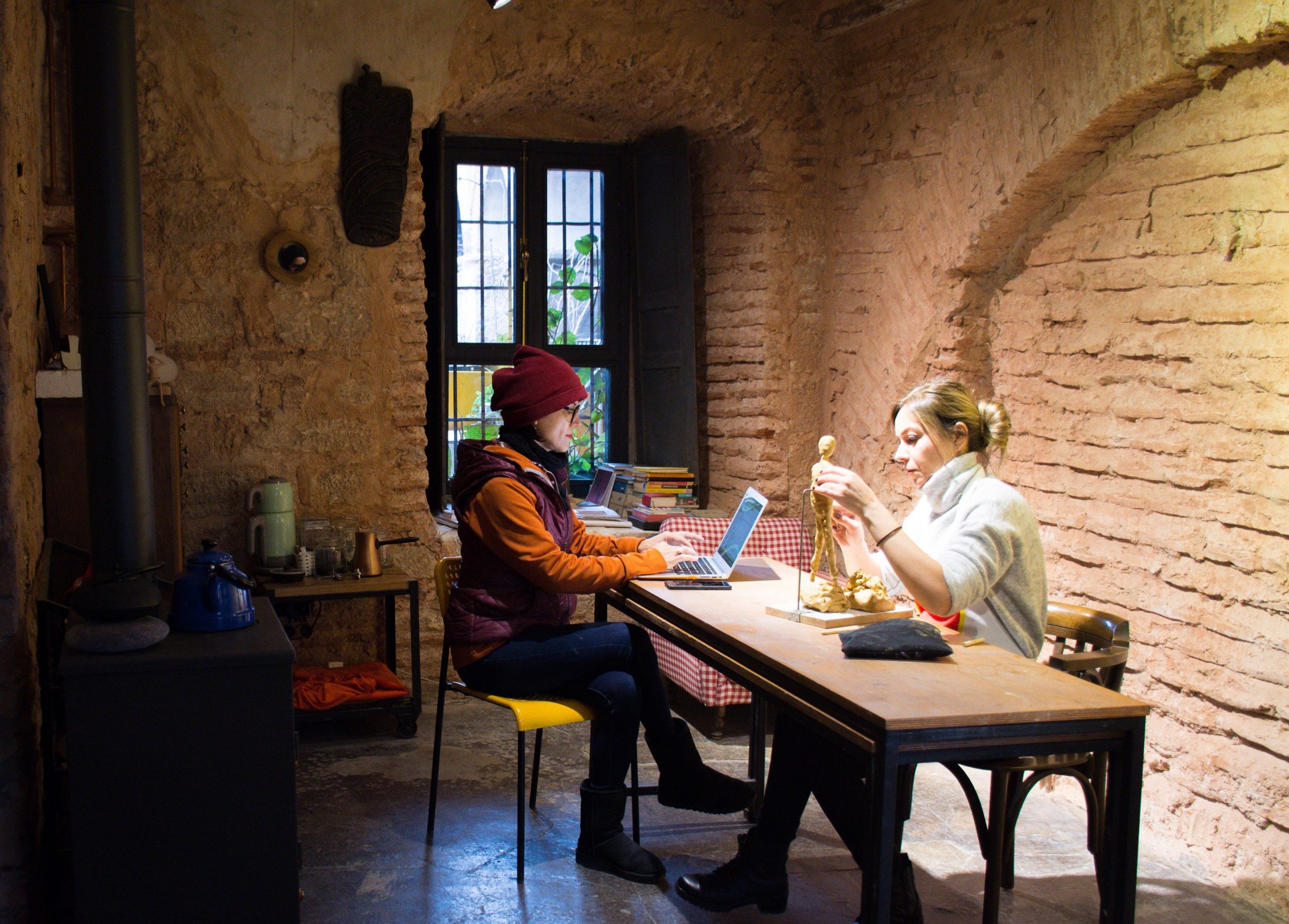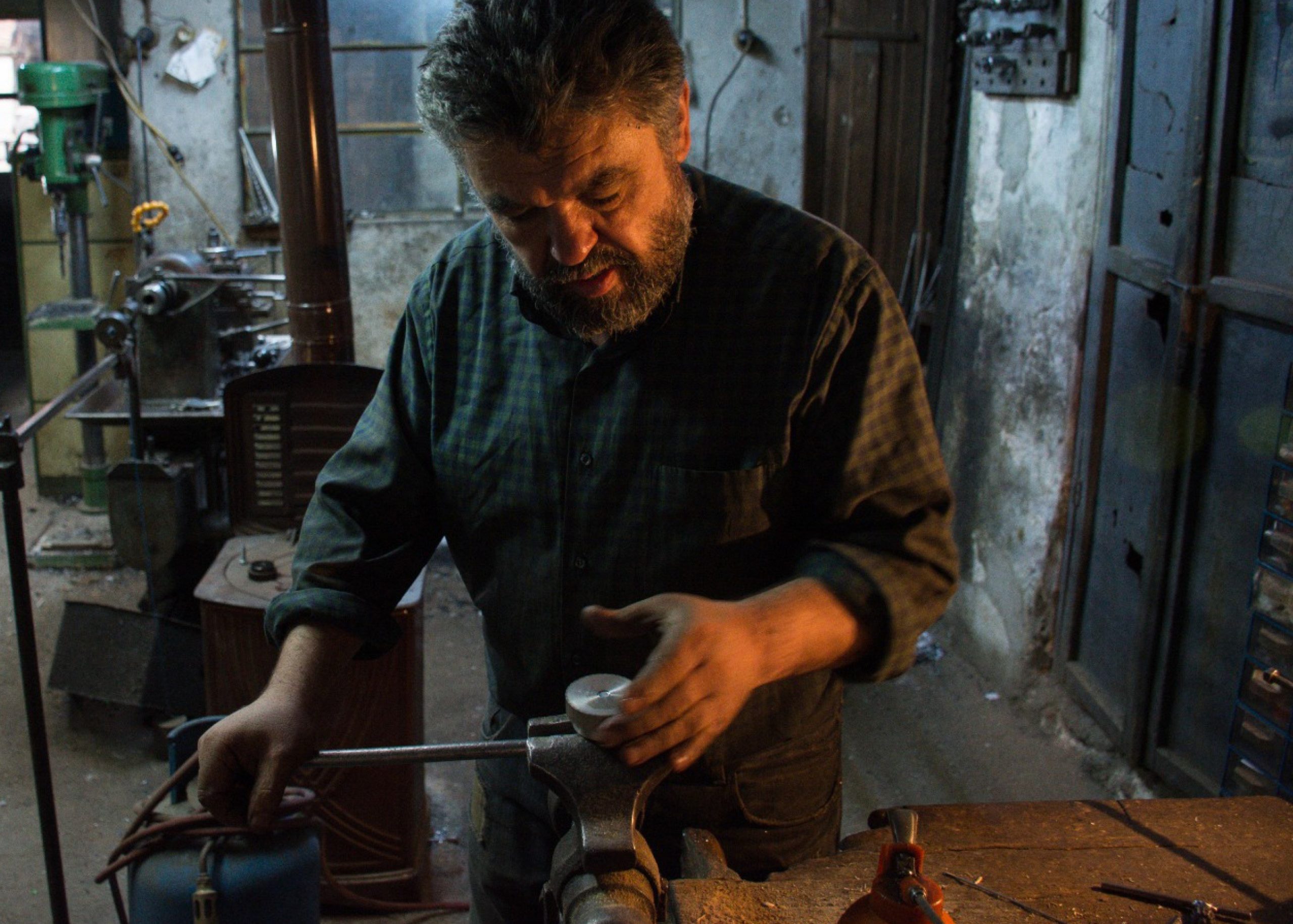The historical Kurşunlu Han, which has served as a hub of trade and manufacturing for around five centuries in Istanbul’s central Karaköy district, has undergone a steady transformation in recent years.
While the rooms at the old Ottoman “han” (a building full of chambers in which independent craftsmen could ply their trade) have, in modern times, mostly served as a base for modern bolt and hardware stores, lathe operators and welders. More recently, a number of artists have decided to set up base there. These creative individuals run workshops in various fields such as painting, architecture, design, sculpture and ceramics, producing countless beautiful works.
Speaking to Anadolu Agency (AA), Gülen Kesova, a tile and ceramic artist who has had a workshop in the han for four years, said she discovered Kurşunlu on the advice of a student of hers and, soon enough, moved her operations there.
Kesova is pleased with the relocation, saying: “I like it a lot. I thought I could only ever dream of a place like this.”

Yet when Kesova arrived at Kurşunlu Han, it was in ruins. As the artist explains: “There weren’t even any windows, so you couldn’t see the interior part from the outside. The floor was dilapidated, it was very dirty and abandoned,” adding that after some time, however: “Each artist fixed up their owns stores and cleaned them. We fixed every detail and solved the heating problem.”
On the artists’ relations with lathe operators in the han, Kesova notes: “When we first came, the lathe operators wondered who we were. I do not know what artists have left in their minds, but once they got to know us, they loved us. We live happily together. We have never had any problems with them. On the contrary, it is easier to get supplies from them. We work well, they have no drawbacks for us and vice versa. We have a good trading relationship. They ask us for ideas on certain things and we take advantage of the lathe machines when we need to.”
Kesova claims the han is the perfect place for artists and stimulates her work: “It requires a lot of dedication to be here. We are under a bit difficult conditions, but it is not a problem for those who like it. I come here very willingly. I am inspired by the sound of seagulls while doing my job.”
Inspired by craftsmen
Nilhan Sesalan, a sculptor who has been working in the han for three years, restored a room that had been empty for 20 years and turned it into a workshop with her friends. However, the restoration effort took a year of work. Says Sesalan: “After I made my mind up, I said, ‘Even if I stay for a year, I want to work here and enjoy it.’ As an artist, I suffer, but I also enjoy it.”
Explaining that the inn was very much a communal life, Sesalan said: “One of the things I like most is the tradesmen who have been here for years. There are both tradesmen and artisans. I like the craftsmen here very much. Slowly, we have started interacting with each other. They tell us that the way we touch upon life and our space has made life more fun and that we have transformed them. They are transforming us as well. I feel ready for this transformation, and I am very open to it. I am already very closely related to the material. Particularly, the way lathe operators touch on that material in their workshops nourishes me. I am very happy to be side by side with them. The interaction is very good, I would not want this place to be ordinary, standardized.”
Sesalan says that she thinks the han will improve further, expressing her happiness being based among such a variety of people of different backgrounds.
Aydoğan Aslan, a lathe operator, meanwhile, says he came to the han as an apprentice in 1975 and eventually started his own business after working as a foreman and master. Pledging he would continue to work at the inn, Aslan said: “Everybody is doing their job, and we keep the pot boiling here.”











Discussion about this post